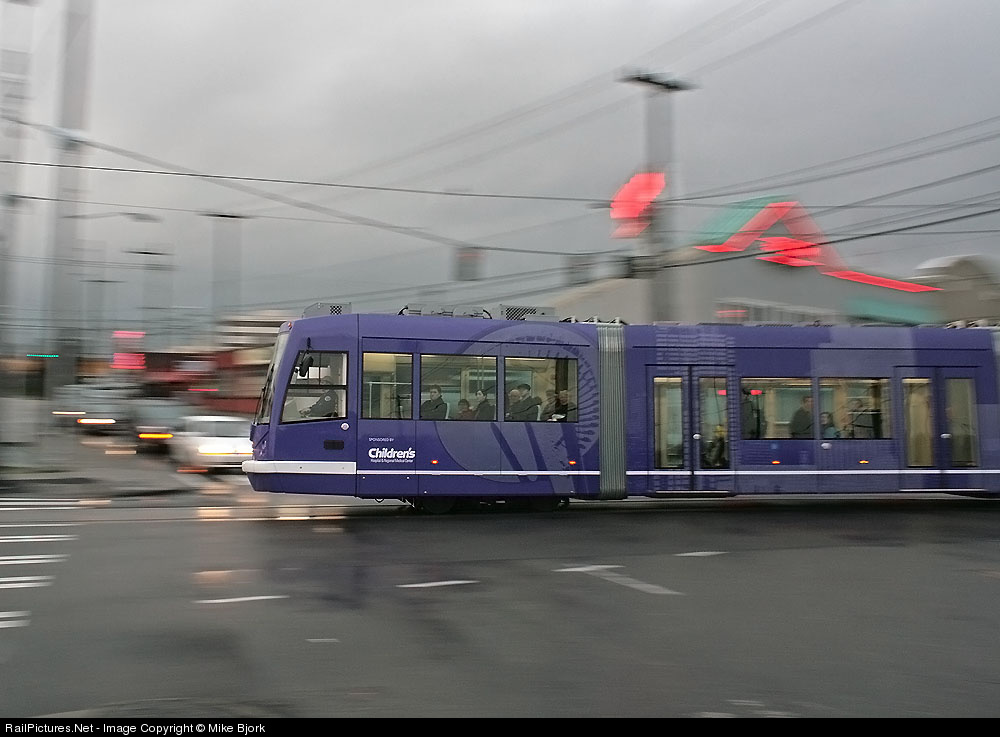 I usually don't care for pans; to me they seem like roster shots with shallow DoF, just an engine and a blurred background, just a different kind of blur. Diesels especially, even with the implied motion there isn't much life in those sorts of shots. But I have seen pans that bring more to the table; here are a few. The key is that the background show some context or offer some contrast, some juxtaposition to the subject.
I usually don't care for pans; to me they seem like roster shots with shallow DoF, just an engine and a blurred background, just a different kind of blur. Diesels especially, even with the implied motion there isn't much life in those sorts of shots. But I have seen pans that bring more to the table; here are a few. The key is that the background show some context or offer some contrast, some juxtaposition to the subject. Mike Bjork's trolley shot above (captioned version here, RP shots here) does a bit of both. I like rain shots when they give the image a bit of shimmer and the wetness on the pavement does that here. The context is a busy intersection, and the contrast is in color, the right purple of the trolley versus the reds of the store lighting and the streaks of various other lights in other colors, a bit of yellow, a bit of green, a bit of white. Very nice (and not only because I am a big fan of rich color)!
 Mitch Goldman, well known for his pans (and other great shots, RP shots here) has been developing his zoom pan technique recently. What I love about this one (captioned version here) is the context. It can be tricky to do an "electrified pan" because one can end up with just a mess of blurred wires and catenary structure. Mitch solves the problem here by doing a zoom pan at a station. By doing the nose-on shot he has room to include trackside elements; by shooting at a station he finds interesting elements to include, not just the shelter but the yellow warning stripe and the wooden paths for boarding on the inner track. He places the train further back, increasing the depth and thus adding to the sense of motion, not just a generic blur but an approaching speedster. Excellent!
Mitch Goldman, well known for his pans (and other great shots, RP shots here) has been developing his zoom pan technique recently. What I love about this one (captioned version here) is the context. It can be tricky to do an "electrified pan" because one can end up with just a mess of blurred wires and catenary structure. Mitch solves the problem here by doing a zoom pan at a station. By doing the nose-on shot he has room to include trackside elements; by shooting at a station he finds interesting elements to include, not just the shelter but the yellow warning stripe and the wooden paths for boarding on the inner track. He places the train further back, increasing the depth and thus adding to the sense of motion, not just a generic blur but an approaching speedster. Excellent! For the final shot, let's go back to Mike Bjork. He recently shot what I will call a "wedgie pan" at Cascade Tunnel (captioned version here). The wedgie angle results in the pan only freezing part of the engine, but look at what one gets from that angle, a view going back down the train to the portal, adding context and interest. Given that the angled view means less panning is required, one gets less blurring of the background, which here means the trees retail reasonable definition. Add to that lots of snow and the semi-selective color that comes with shooting BNSF orange during darkening conditions and you end up with a super shot!
For the final shot, let's go back to Mike Bjork. He recently shot what I will call a "wedgie pan" at Cascade Tunnel (captioned version here). The wedgie angle results in the pan only freezing part of the engine, but look at what one gets from that angle, a view going back down the train to the portal, adding context and interest. Given that the angled view means less panning is required, one gets less blurring of the background, which here means the trees retail reasonable definition. Add to that lots of snow and the semi-selective color that comes with shooting BNSF orange during darkening conditions and you end up with a super shot!I am glad to see that people have found ways to liven up what to me is the rather staid if not dull basic pan shot.






